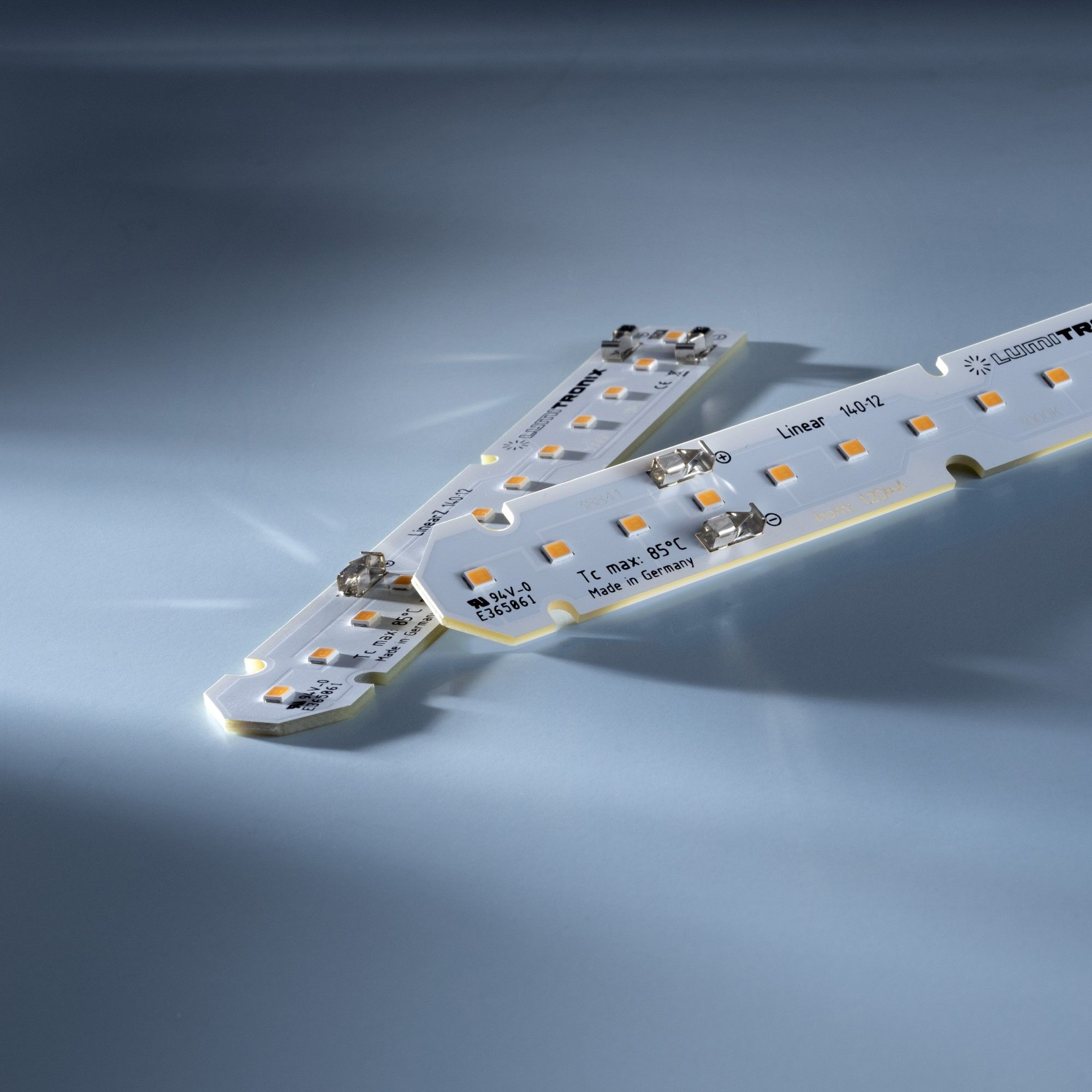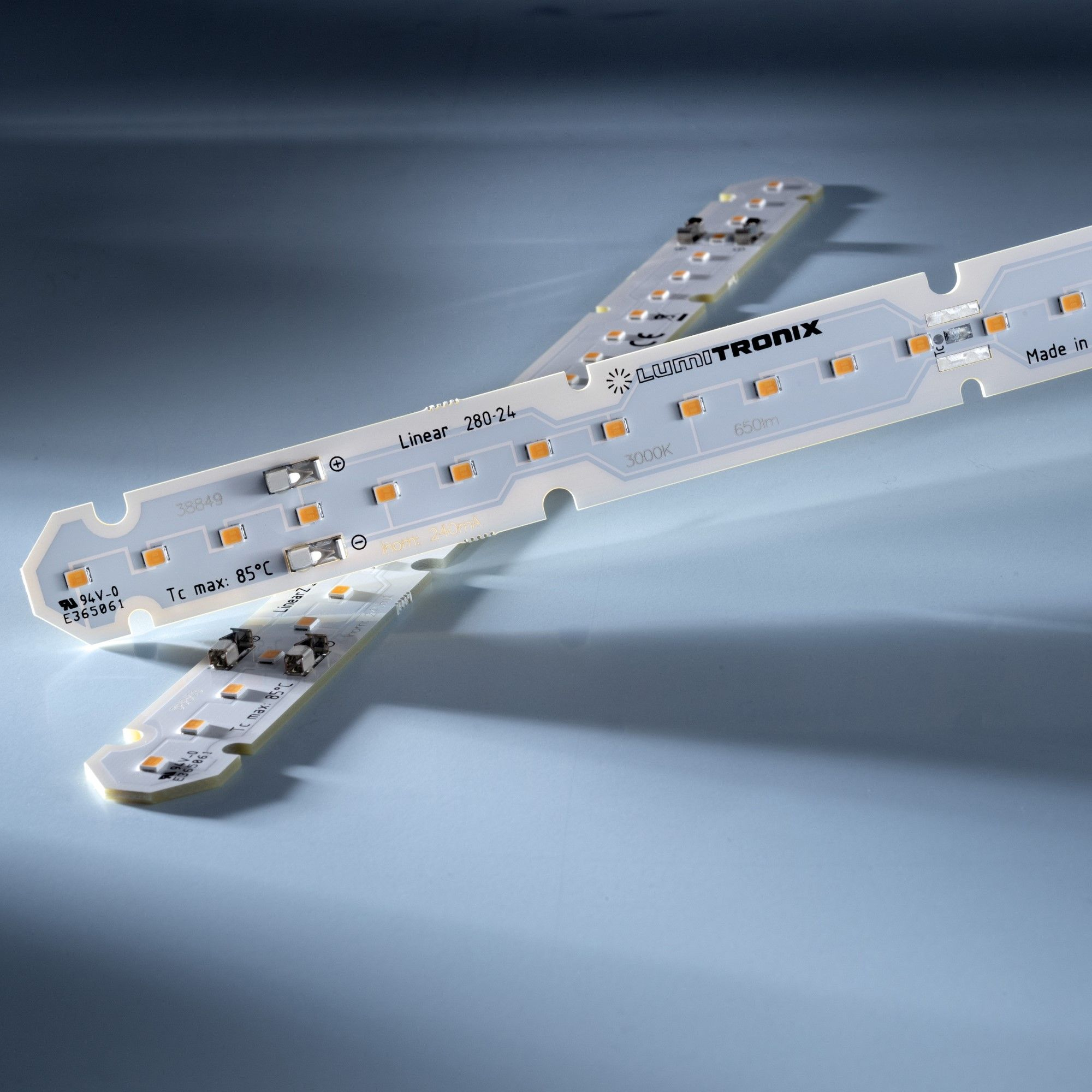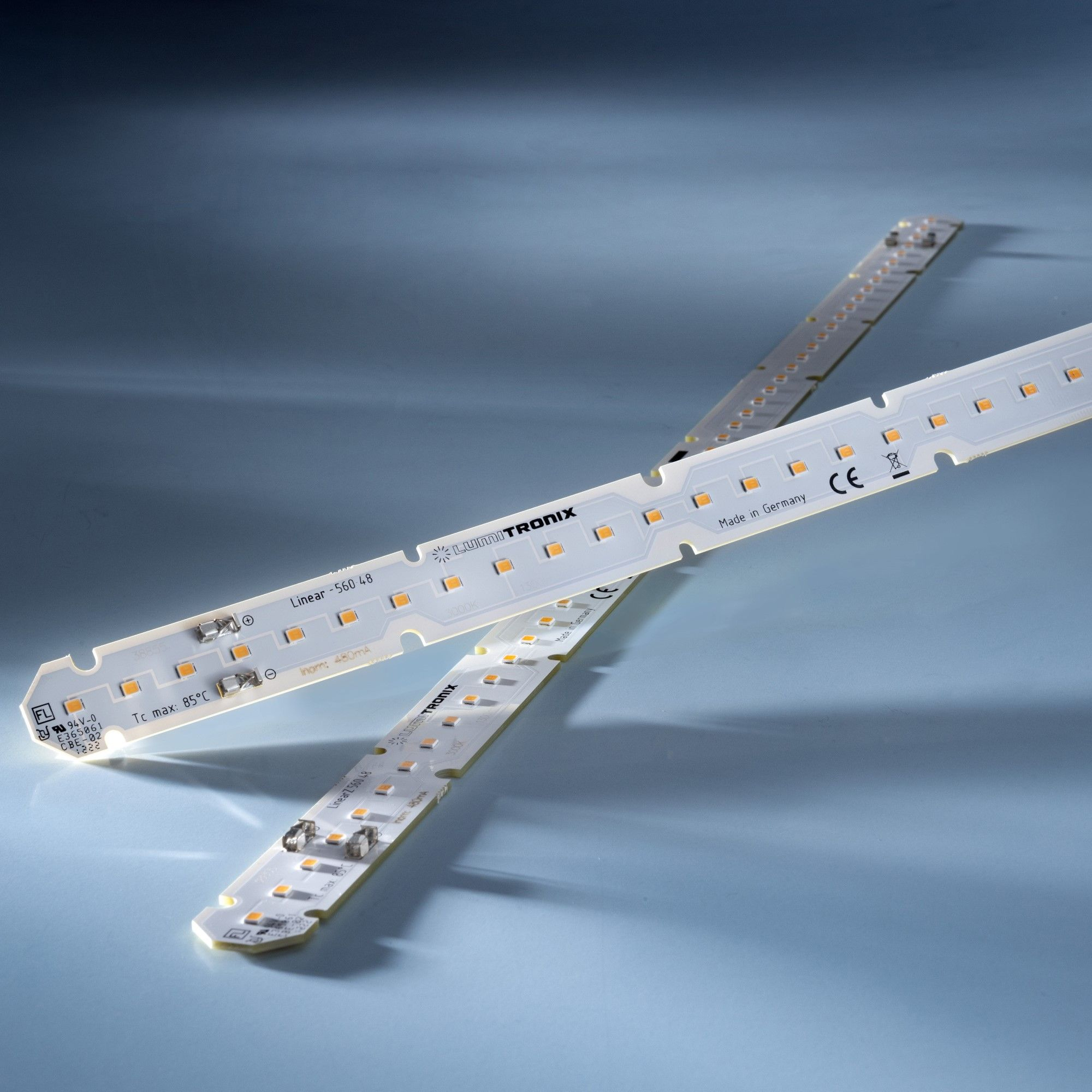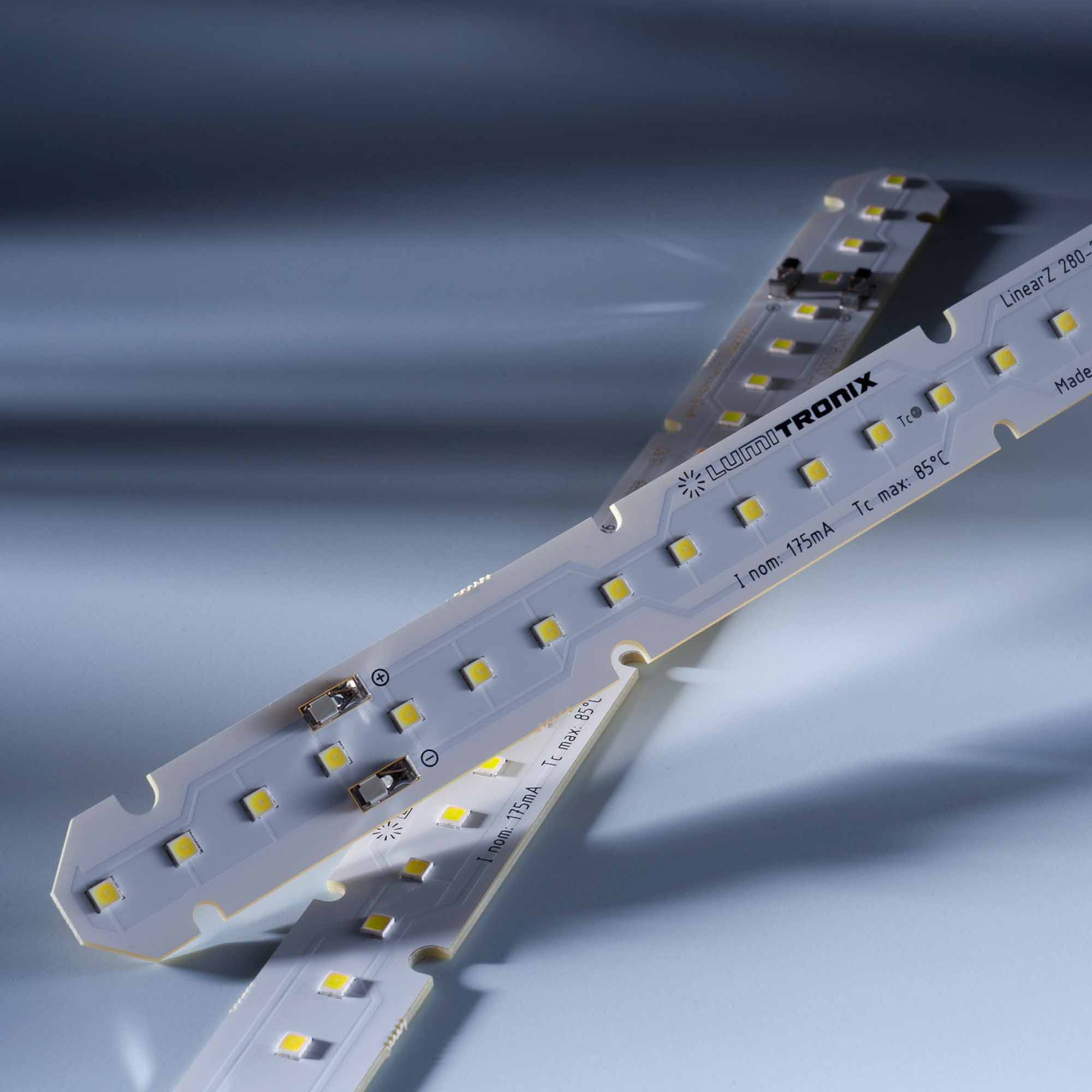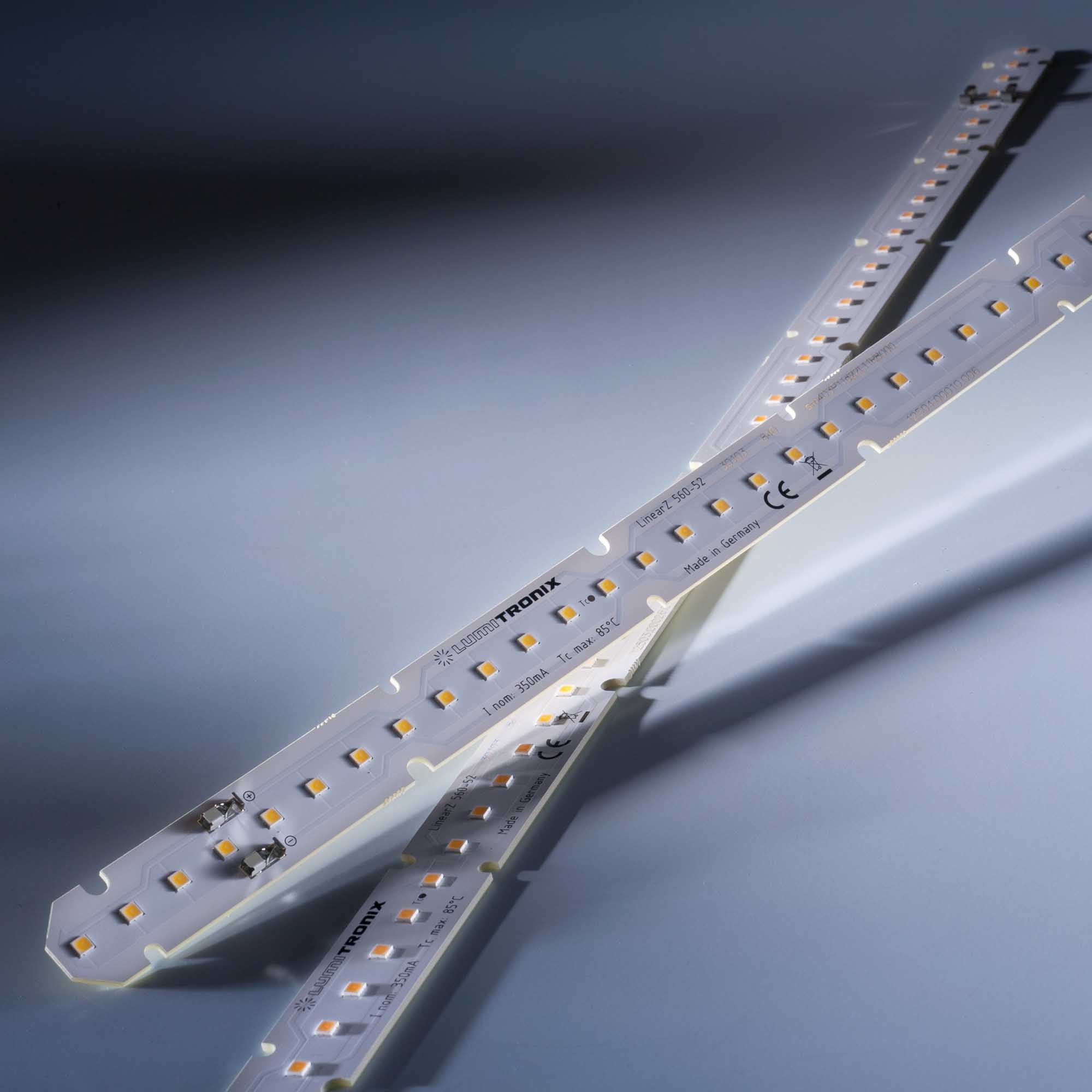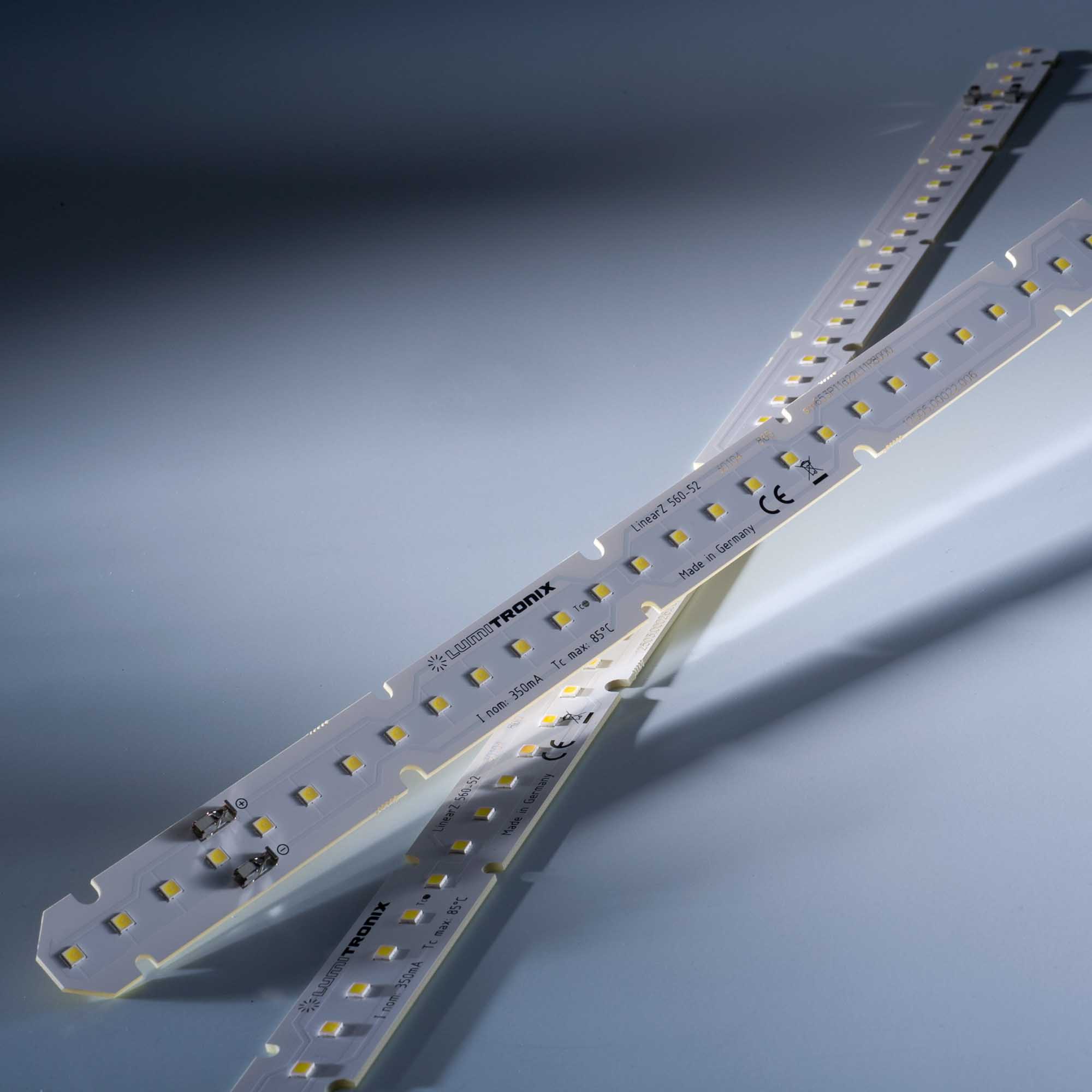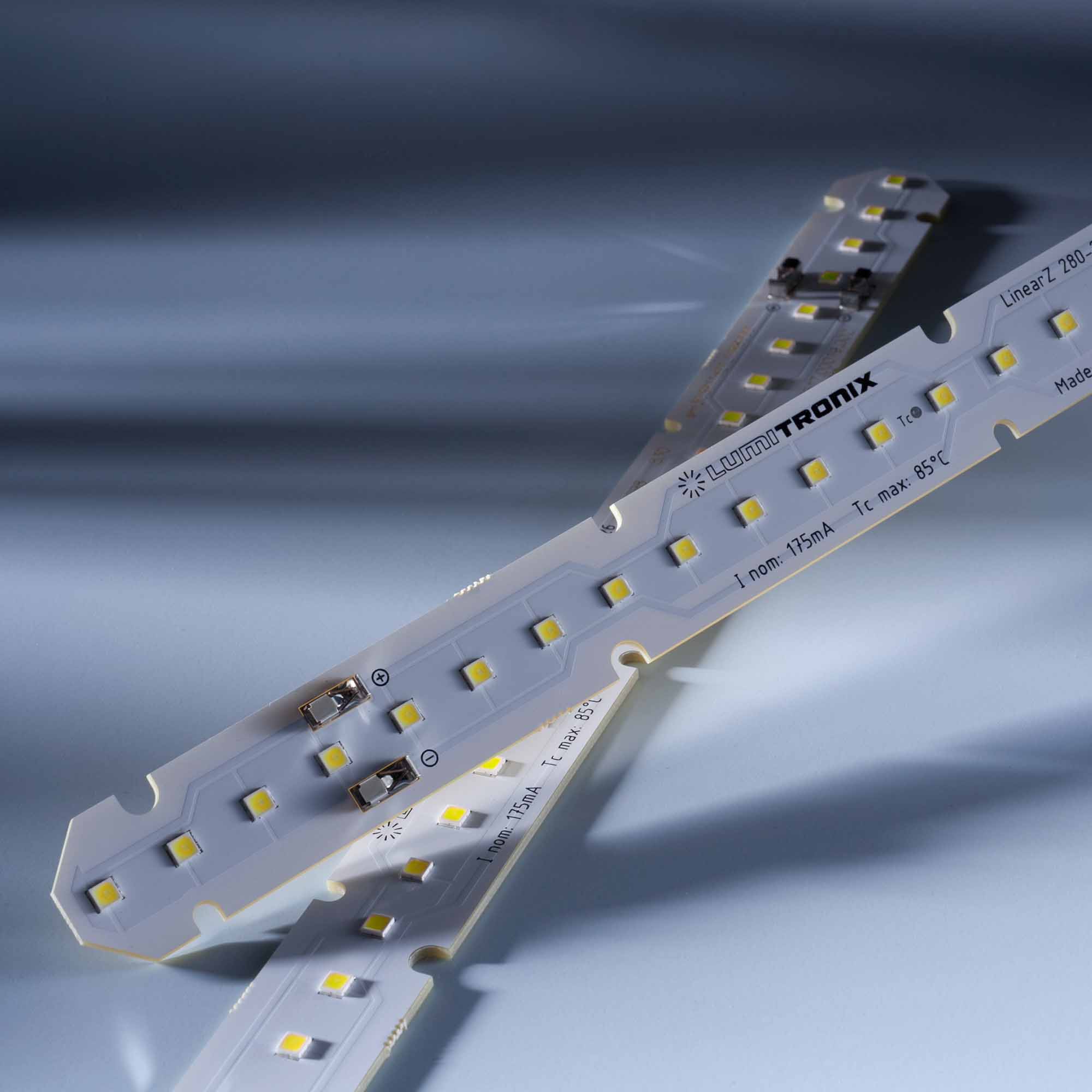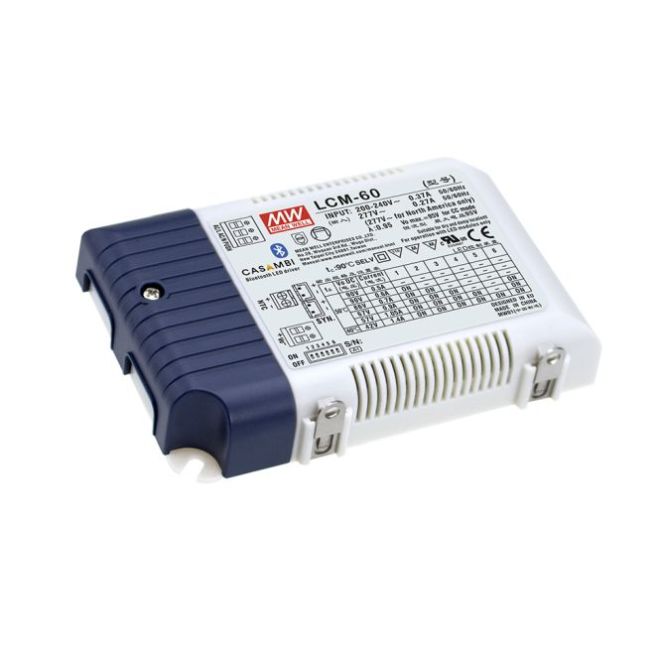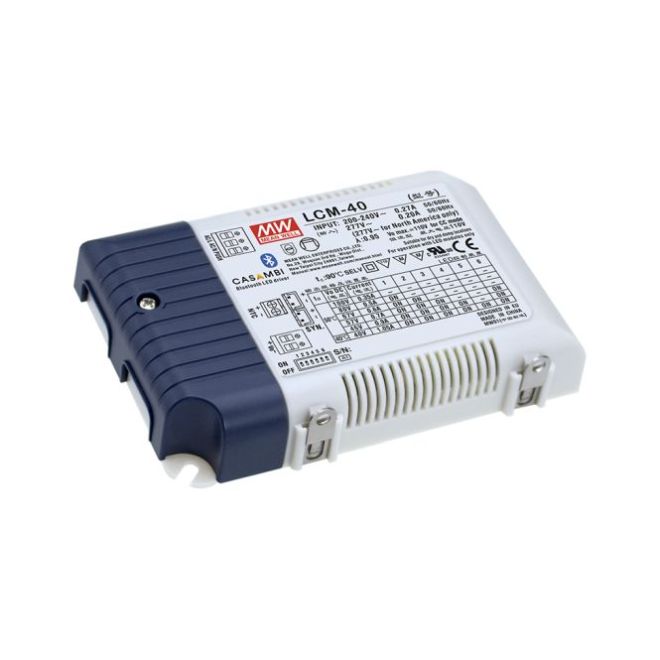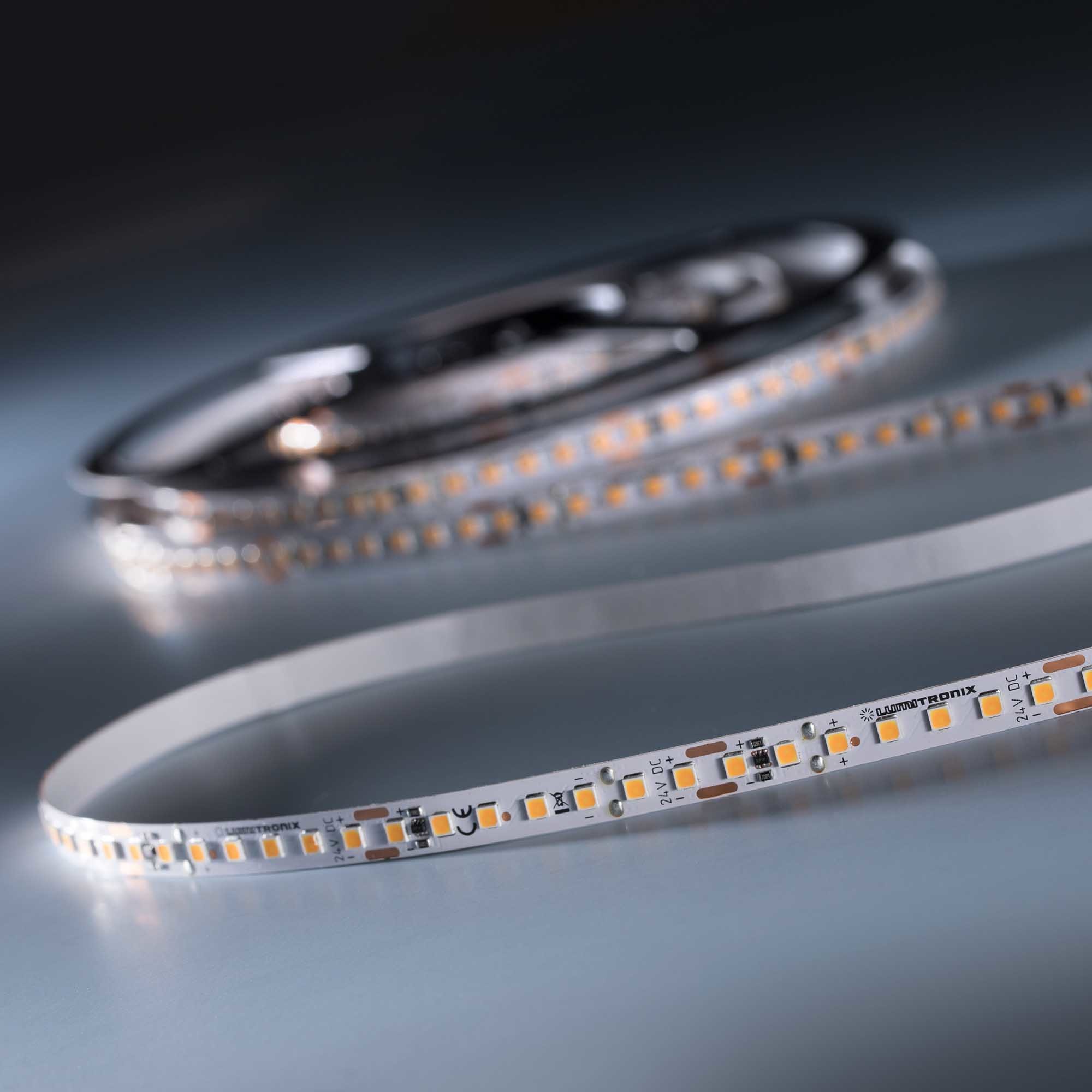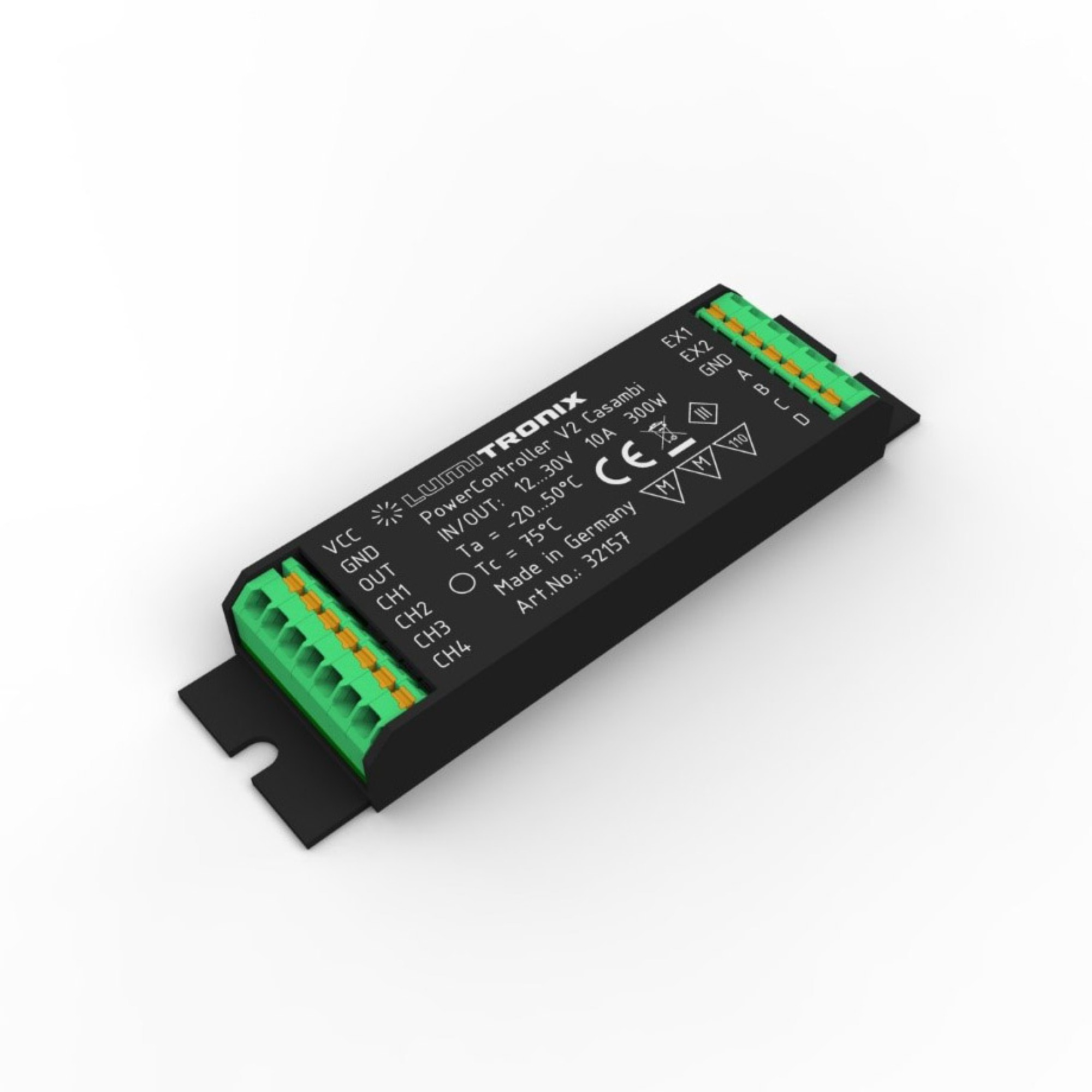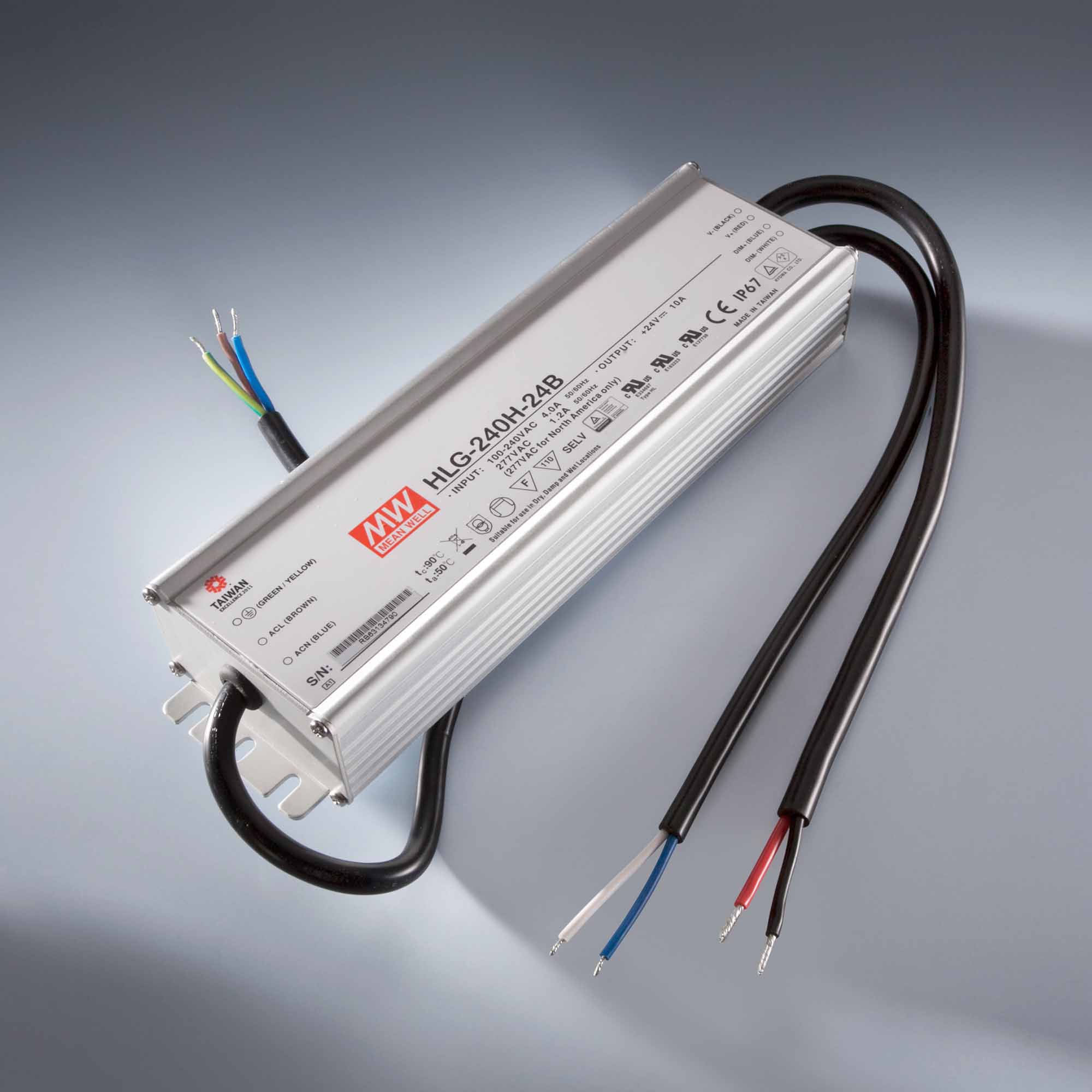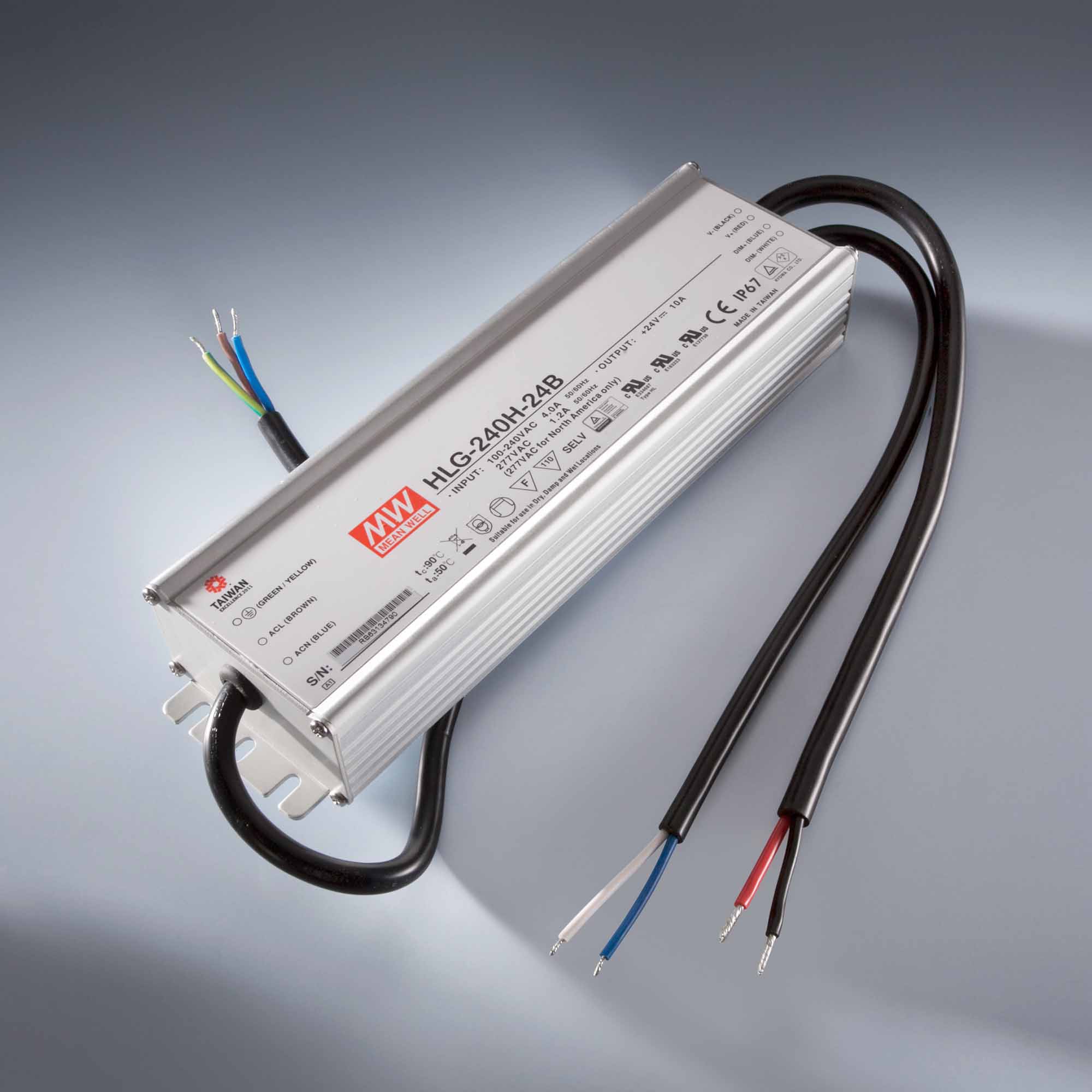The Guide to Efficient Horticultural Lighting Systems with Full Spectrum LEDs
- By Lumistrips LED Professional
- Apr 30, 2023

Growing plants in closed and fully controlled environments under artificial lighting has become increasingly popular in recent years. As competition intensifies, the demand for low-cost, high-speed results has placed a significant focus on the efficiency of lighting systems. In this comprehensive guide, we'll walk you through the essential steps to create an efficient and cost-effective lighting system for optimal plant growth.
1. Research the Spectrum and Intensity of Light Your Plants Need
The first step in designing an efficient lighting system is to determine the appropriate spectrum and intensity of light required for your specific plants. Different plants have varying needs in terms of light spectrum and intensity for optimal growth. To learn more about horticultural lighting, read our detailed article [here].
2. Choose the Right Photosynthetic Photon Flux Density (PPFD) and Light Color for Your Plants
With advancements in technology, special or full-spectrum white light LEDs have emerged as the most efficient and cost-effective light sources for plant growth. Our full-spectrum/Rsp0a CRI98+ LED strips will help your plants grow up to 50% more than conventional light sources, such as standard white LEDs, a combination of red and blue LEDs, or fluorescent tubes, while consuming less energy.
Selecting the appropriate color temperature is also essential. A 3000K white color temperature results in more aesthetically pleasing plants, while a 5000K color temperature promotes faster growth.
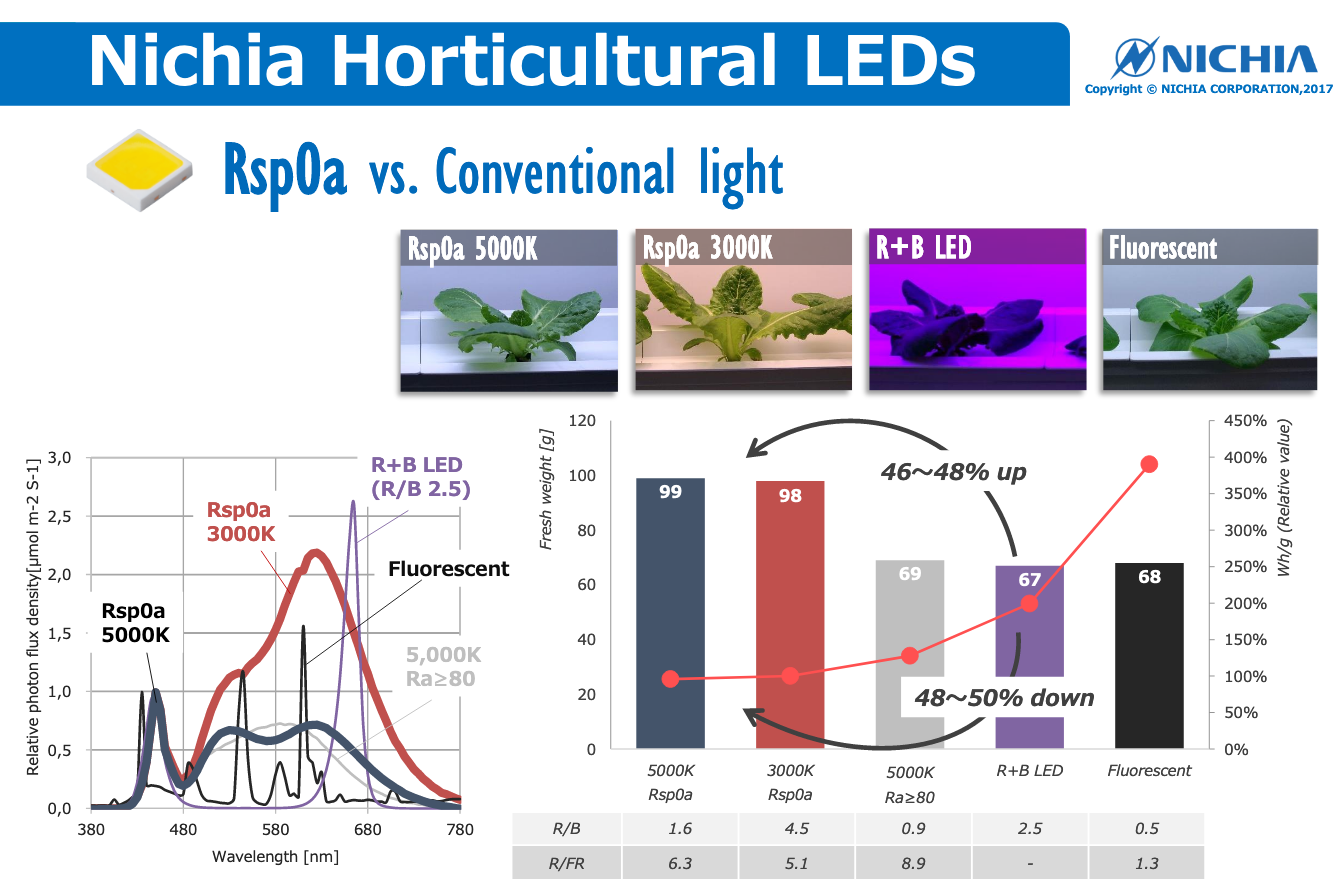
Below is a table displaying the PPF and PPF/Watt values of our LumiBar/LinearZ LED modules. It also includes the PPFD per square meter or square foot from a distance of 30 cm between the LEDs and the plant leaves:

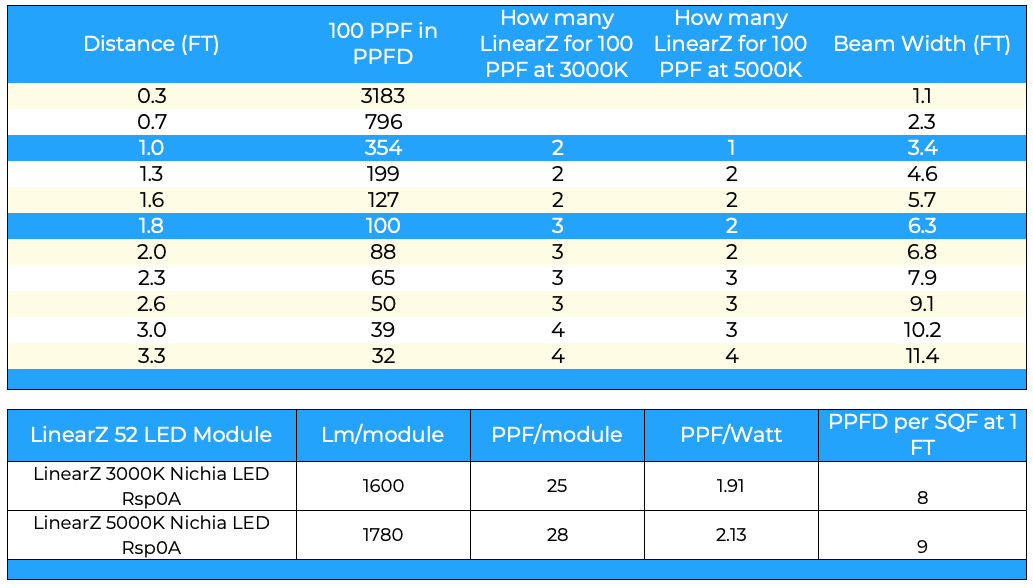 Here are some examples of recommended PPFD (PPF per square meter) for common indoor plants:
Here are some examples of recommended PPFD (PPF per square meter) for common indoor plants:
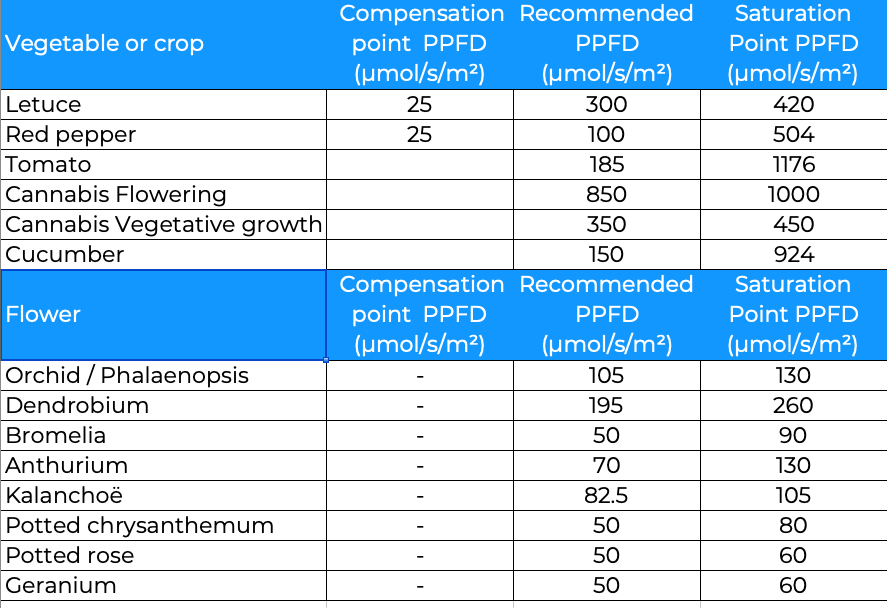
For more values, read our detailed article here.
To light the plants in the table above, use the following recommended data for each square meter of soil:
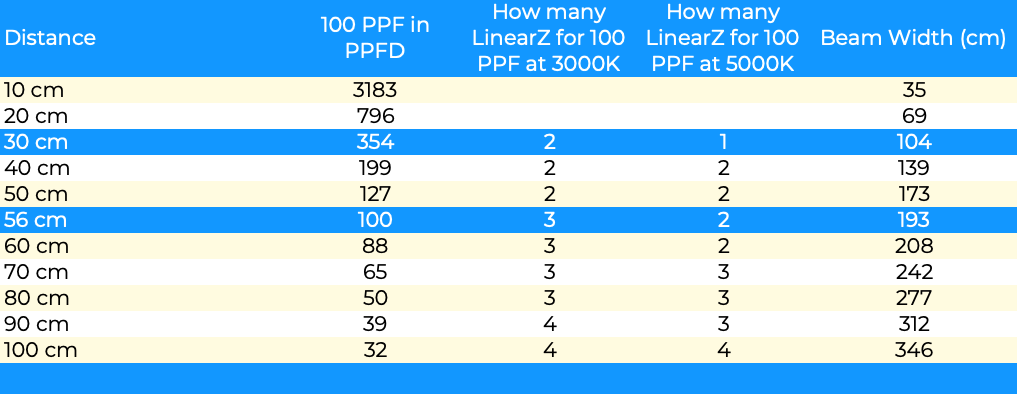
At a distance of 30 cm, two LumiBar/LinearZ LED modules at 3000K will have a PPFD of 354, while at 56 cm, the PPFD drops to 100. We recommend maintaining a 30 cm (1 foot) distance between the leaves and the LED modules for optimal results.
3. Minimize Energy Costs: Focus on Efficacy (PPF/Watt)
Your LED system should deliver high PPF with minimal power consumption, ensuring low operating costs. For example, our LumiBar full-spectrum strip at 5000K boasts a PPF/Watt value of 1.82, one of the highest on the market.
4. Ensure Color Stability Over Time
It's crucial to select an LED system with minimal color shift over its operational lifetime. Otherwise, the plant growth process could be severely affected. Long-lifetime LEDs from reputable manufacturers like Nichia, Osram, or Cree offer excellent color stability. Our LED modules provide reliable color stability for a minimum operational period of 60,000 hours.
5. Use LEDs with Consistent 3000K or 5000K Color Temperatures
White LEDs, like any manufactured product, have material and process variations that result in varying shades of white light emitted. For example, freshly produced Nichia warm white LEDs can have a color temperature ranging from 2580K to 4260K. If used directly in strips or luminaires for plant growth, the results will be subpar.
To avoid this issue, LEDs must be sorted and grouped into batches known as "Chromaticity Bins." A 3-step MacAdam Ellipse sorting is necessary to ensure that all LEDs in the strip have a consistent 3000K or 5000K color temperature.
6. Opt for Easy-to-Install or Replaceable Modules
Horticulture often involves intensive use of lighting systems, with typical daily run times ranging from 12 to 16 hours. As a result, it's vital to select modules or strips that are easily replaceable. We recommend using the Zhaga shape and connection standard, as it allows for effortless installation or replacement of LED strips.
7. Install a dimming or light control system
For growing plants, installing a dimming option is essential. Dimming the LED strips require both the LED strips and the transformer to be dimmable. Light intensity can then be controlled via an external dimmer, such as a rotary or push-button wall switch, remote control, smart building control signal, or an app on the phone or tablet. It is recommended to purchase the type of dimming control at the same time as the transformer and the LED strip. Dimming is best considered during the design stage so that the electrical installation is made accordingly.
We recommend wireless dimming control via Casambi compatible products. Casambi is the most robust, cost effective and future-proof wireless lighting control solution. It also has many online resources, including how-to guides.
In summary, designing an efficient horticultural lighting system involves several critical factors. Conduct thorough research to determine the ideal spectrum and intensity of light for your plants, select the appropriate PPFD and light color, minimize energy costs by focusing on efficacy, ensure color stability over time, use LEDs with consistent color temperatures, and choose easy-to-install or replaceable modules.
By following these guidelines and using the right products, you'll be well on your way to creating a highly efficient, cost-effective lighting system that promotes optimal plant growth in your controlled environment.
We recommend:
Our LumiBar LEDs with CRI98+ are available in easy-to-install plug & play modules that adhere to the Zhaga Standard. LumiBar modules feature a Plug & Play power system that enables wire connections without the need for a soldering gun, and they are available in a constant current version for maximum energy efficiency.
For dimming and light control via Casambi, the recommended drivers and control button are:
If you're looking for a more flexible option, consider our LumiFlex3098+ 24VDC Flexible LED strip, which is also easy to install and control.
For dimming and light control via Casambi, the recommended drivers and control system are:
In summary, designing an efficient horticultural lighting system involves several critical factors. Conduct thorough research to determine the ideal spectrum and intensity of light for your plants, select the appropriate PPFD and light color, minimize energy costs by focusing on efficacy, ensure color stability over time, use LEDs with consistent color temperatures, and choose easy-to-install or replaceable modules.
By following these guidelines and using the right products, you'll be well on your way to creating a highly efficient, cost-effective lighting system that promotes optimal plant growth in your controlled environment.

 Lumistrips EN
Lumistrips EN Lumistrips US
Lumistrips US Lumistrips ES
Lumistrips ES Lumistrips PT
Lumistrips PT Lumistrips ITA
Lumistrips ITA